America's Most Popular Breakfast Cereals (And the Stocks Behind Them)
Cheerios? Frosted Flakes? Raisin Bran? Kellogg, General Mills, Post and Quaker rake in billions of dollars a year in cereal sales. Who's No. 1?
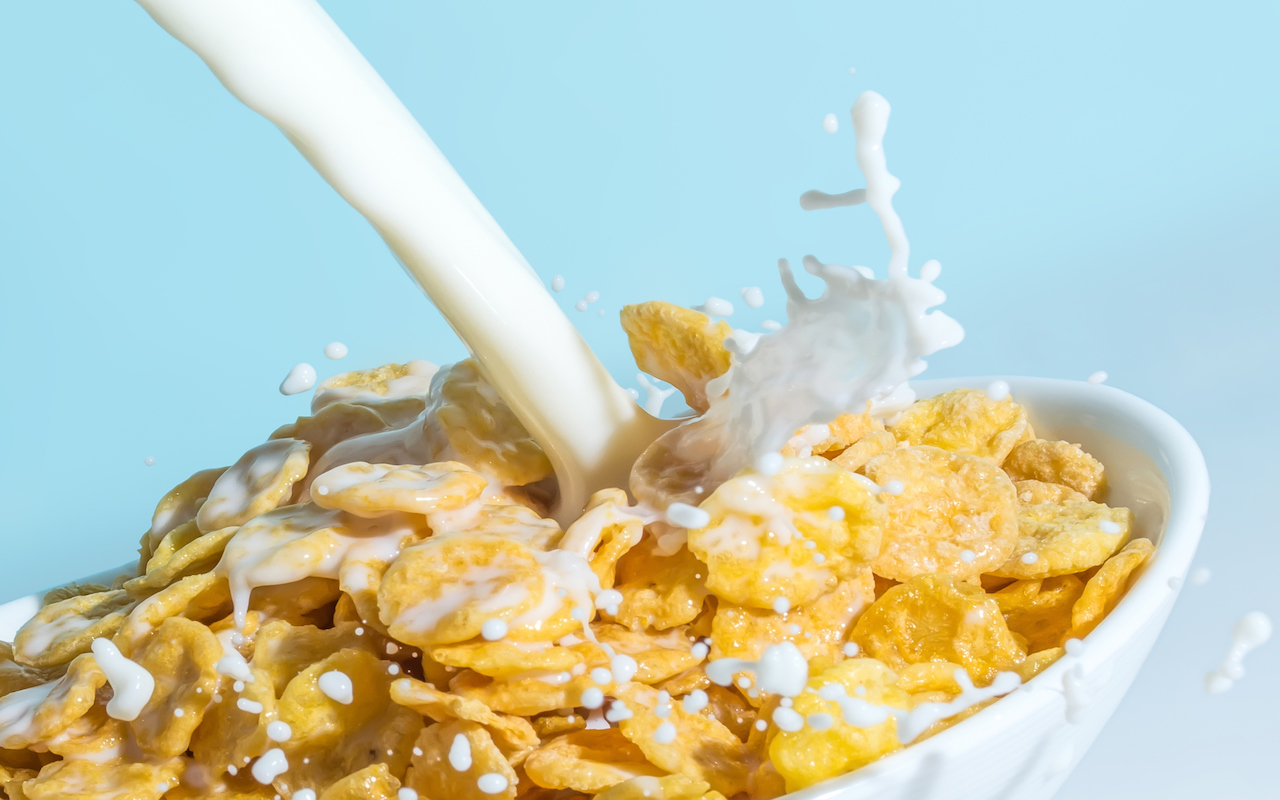

Breakfast is big business. Americans gobbled up $8.5 billion worth of ready-to-eat cereal over the past year, according to IRI, a market research firm. Just four companies – General Mills (GIS), Kellogg (K), Post Holdings (POST) and Quaker Foods, a division of PepsiCo (PEP) – collectively accounted for $7.3 billion of those sales.
Although cereal sales have been stagnant of late – down 1.4% year-over-year – growing interest in cereal as a snack among younger consumers could goose demand. Market research firm Mintel found that 56% of millennials say they've eaten cereal as a snack at home, compared with just 32% of baby boomers.
"While breakfast is the most common occasion for eating cereal and nearly universal across age groups, snacking on cereal may offer greater potential for reinvigorating category growth, especially among younger adults," says John Owen, an analyst with Mintel.
So which cereal brands are Americans buying the most? Take a look at the list of the 19 most popular cereals in the U.S. to find out.
IRI retail sales data is for the 52 weeks ended Aug. 12, 2018. Figures represent individual brand listings. For example, Cheerios and Honey Nut Cheerios are tracked as separate brands, rather than being rolled up into a single “Cheerios” brand. Cereals are ranked in reverse order by annual sales.
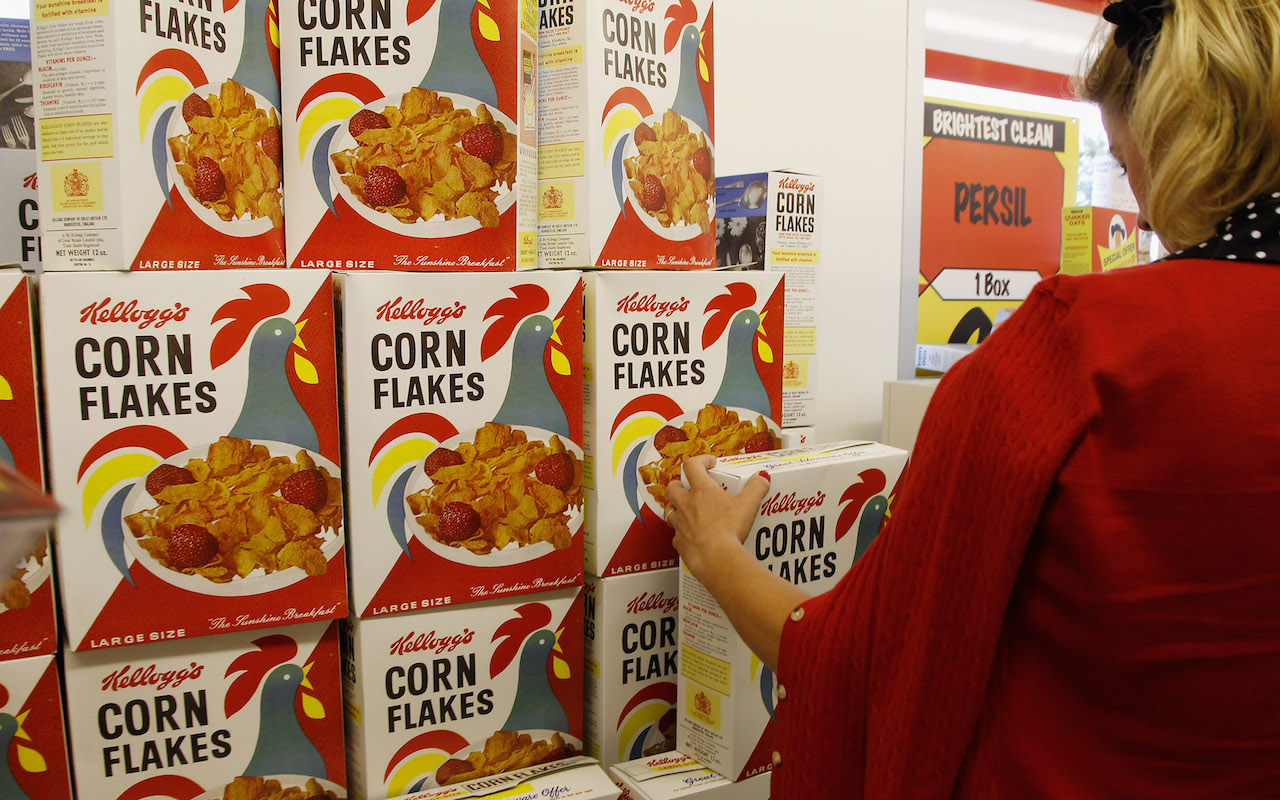
19. Corn Flakes
- Company: Kellogg
- Sales: $110.0 million (-6.7% year-over-year)
- Boxes sold: 31.7 million (-7.0% year-over-year)
- Average unit price: $3.47
Kellogg's Corn Flakes traces its history back to 1894 , when company founder W. K. Kellogg and his brother accidentally stumbled upon the process to flake corn. It remains one of the best-selling U.S. breakfast cereals to this day, though its popularity is waning. Corn Flakes sales fell 6.7% year-over-year, with 7% fewer boxes sold. On the plus side, the average price per box of Corn Flakes rose by a penny.
Kellogg, the No. 2 cereal maker behind General Mills, saw it total U.S. cold cereal sales fall 3.4% year-over-year to $2.49 billion, according to IRI. Analysts, on average, rate Kellogg stock at "Hold," according to S&P Global Market Intelligence, as the company struggles to reinvigorate its so-called U.S. Morning Foods segment.
As Kellogg CEO Steven Cahillane told analysts in early February: "You shouldn’t look at U.S. Morning Foods and say this is going to be the growth engine for the Kellogg Co."
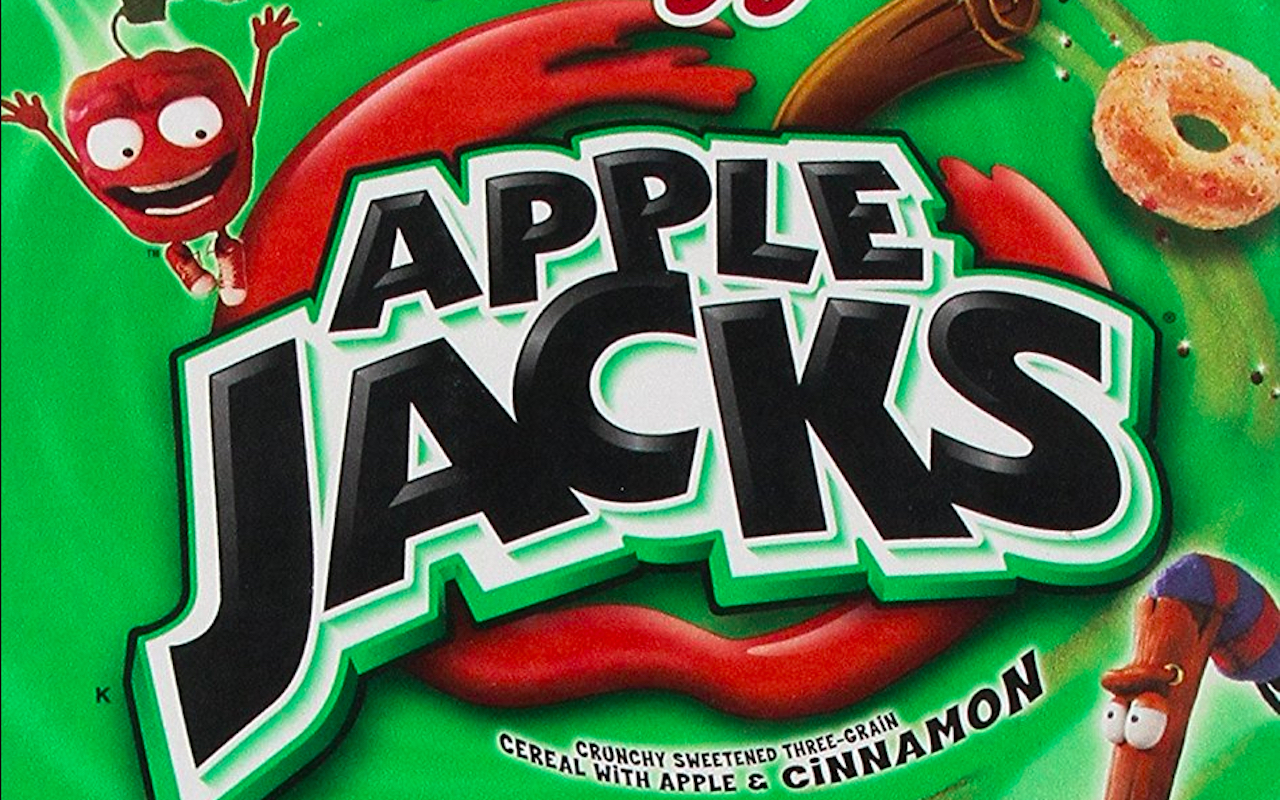
18. Apple Jacks
- Company: Kellogg
- Sales: $110.7 million (-8.2% year-over-year)
- Boxes sold: 40.8 million (-4.0% year-over-year)
- Average unit price: $2.71
Apple Jacks, introduced in 1965, is another beloved Kellogg's staple that's been hurting the company's ready-to-eat cereals business. Kellogg sold a bit less than 41 million boxes for year ended Aug. 12, a decline of 4%.
The decline in revenue was even steeper. Sales fell more than 8% to $110.7 million, as the average price per box dropped by 12 cents year-over-year.
Although the brand's performance might be unappetizing for Kellogg investors, there is a tasty takeaway for consumers. With an average unit price of just $2.71, Apple Jacks is the least expensive name on the list of Americans' favorite cereals.
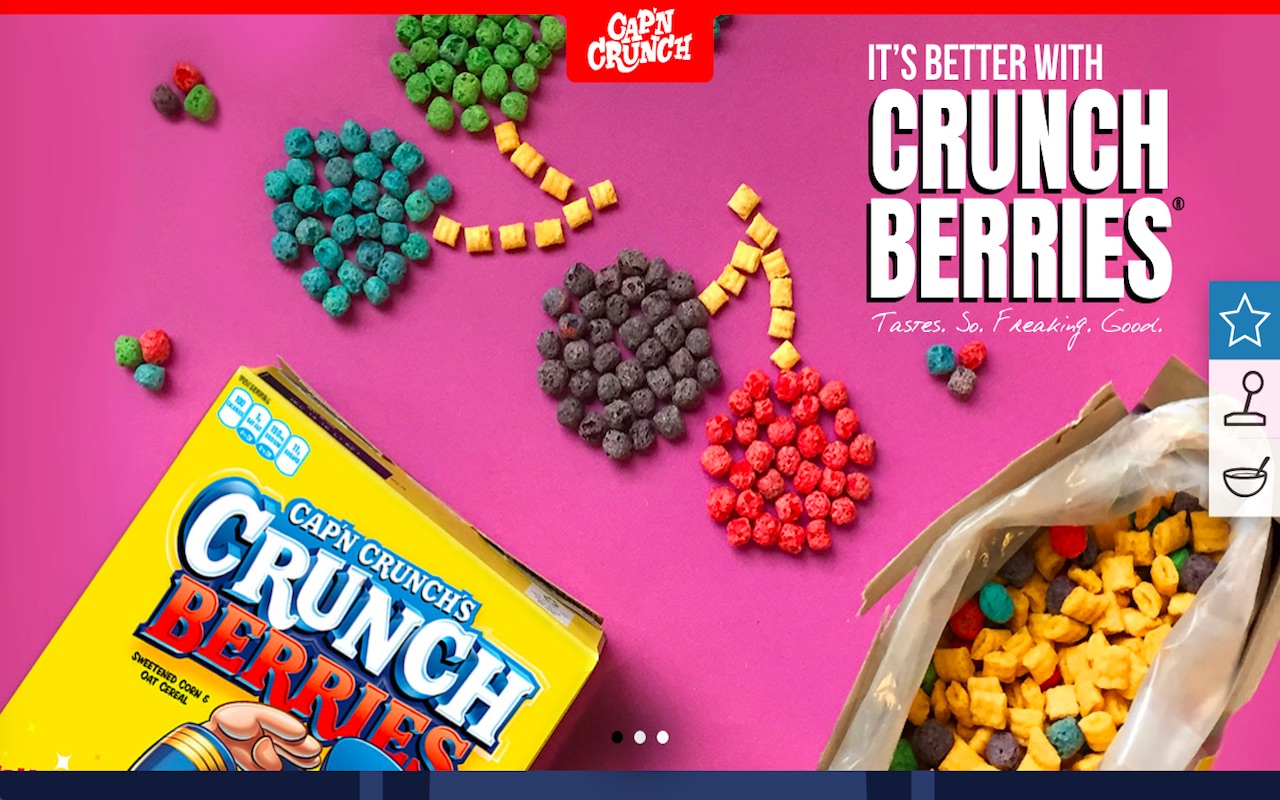
17. Cap'n Crunch's Crunch Berries
- Company: Quaker Foods (PepsiCo)
- Boxes sold: 38.3 million (+6.9% year-over-year)
- Average unit price: $2.94
Cap'n Crunch's Crunch Berries celebrated its 50th birthday in 2017, and it's still going strong thanks in part to the enduring appeal of mascot Capt. Horatio Magellan Crunch. The popular cereal generated $112.5 million in sales for Quaker Foods North America, a division of PepsiCo, over the 52 weeks ended Aug. 12.
Although Crunch Berries' sales growth of more than 7% is impressive given the otherwise stagnant cold-cereal market, it doesn't move the needle much on Quaker’s (or Pepsi's) results. Quaker Foods North America had total revenue of $2.5 billion in 2017, which accounted for just 4% of Pepsi's $63.5 billion in annual sales last year.
That said, analysts, on average, rate Pepsi shares at "Outperform" (buy), according to S&P Global Market Intelligence. Cap'n Crunch's Crunch Berries is just one -- albeit small -- reason to be sweet on PEP stock.
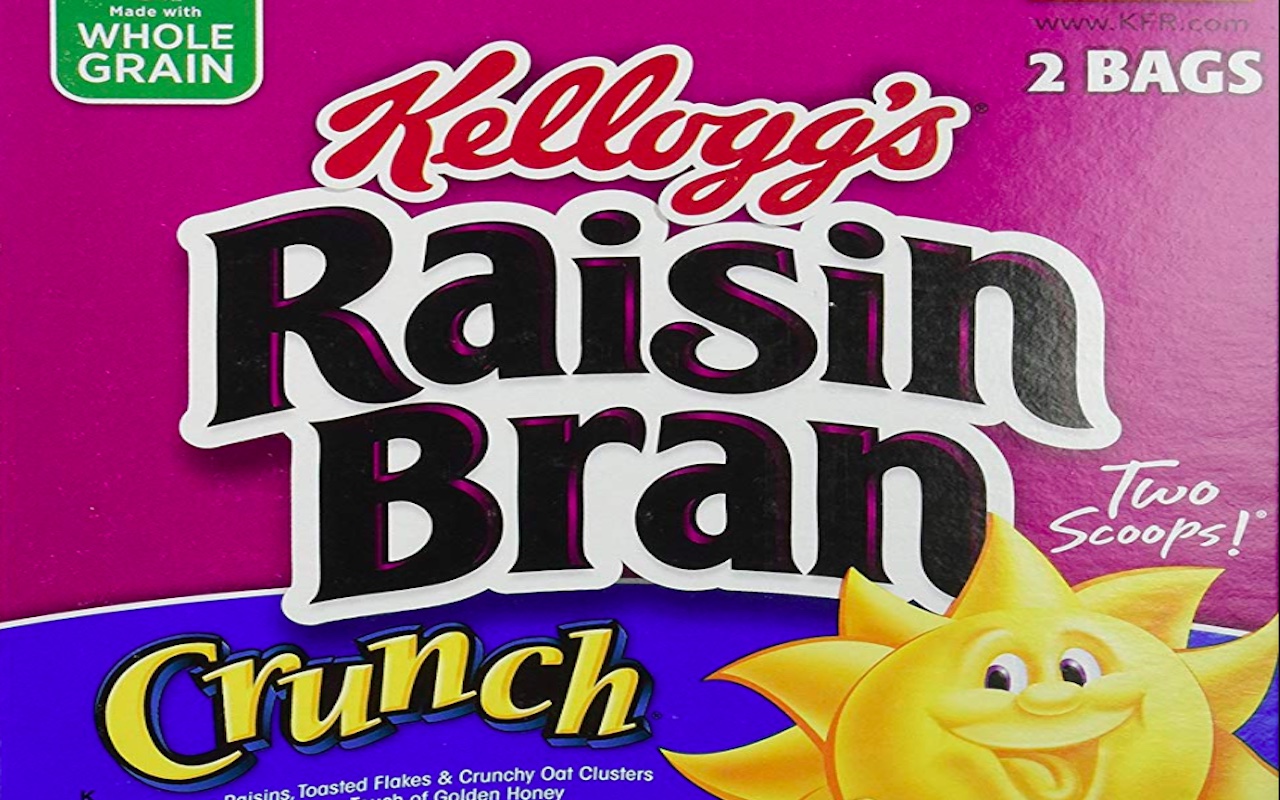
16. Raisin Bran Crunch
- Company: Kellogg
- Sales: $120.7 million (+5.1% year-over-year)
- Boxes sold: 37.5 million (+4.7% year-over-year)
- Average unit price: $3.22
Kellogg has been pushing the health and wellness benefits of its cereals since the company started in 1906. It continues to do so today, and it’s paying off for some of its brands.
Raisin Bran Crunch, which Kellogg says has a hearty 4 grams of dietary fiber per cup, is enjoying some of the strongest growth among Americans' favorite breakfast cereals. Sales were up 5.1% year-over-year.
Contrast that to overall net sales for Kellogg's U.S. Morning Foods segment, which fell 3% to $643 million in the second quarter. According to Credit Suisse analysts, the company's healthier fare, such as Raisin Bran Crunch, is managing to buck the downward trend.
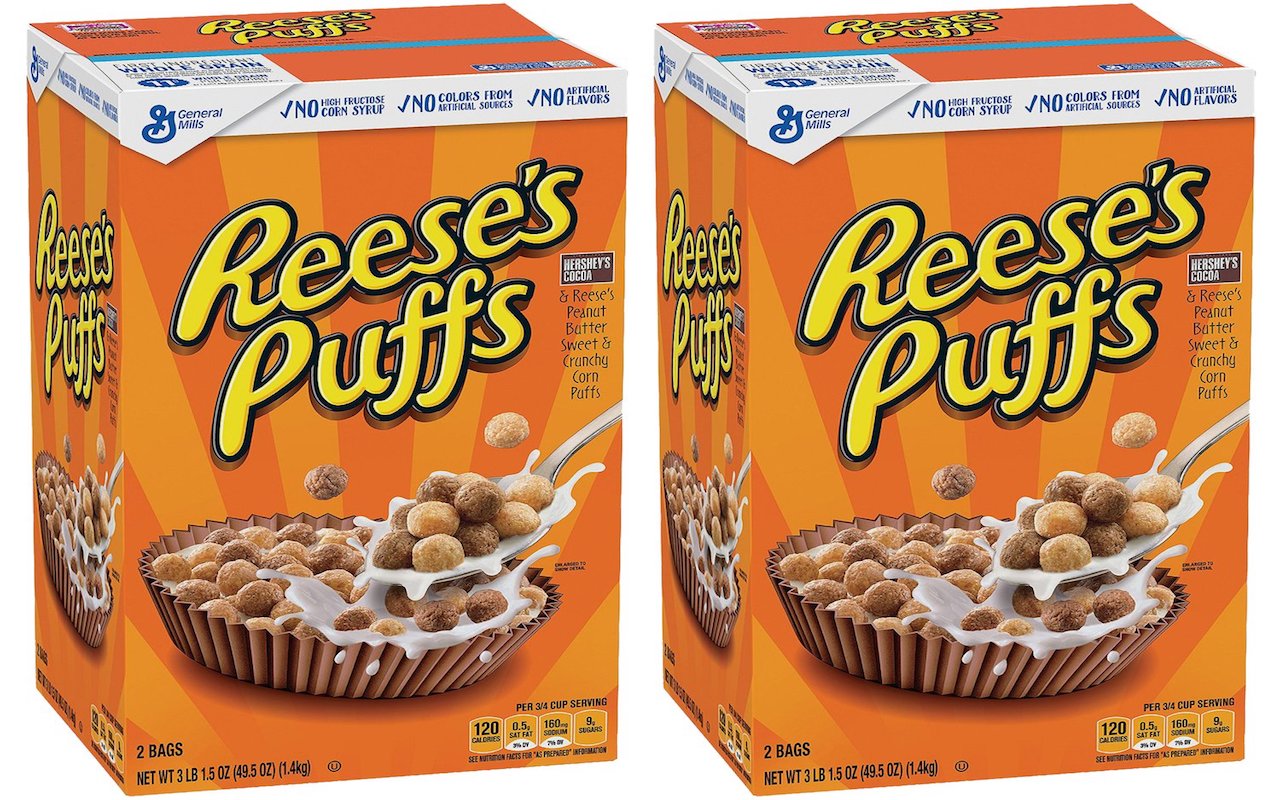
15. Reese's Puffs
- Company: General Mills
- Sales: $121.5 million (+3.0% year-over-year)
- Boxes sold: 35.3 million (-0.2% year-over-year)
- Average unit price: $3.44
General Mills, the biggest cereal maker, saw gains in both dollar sales and unit sales for all of its cereal brands combined during the 52 weeks ended Aug. 12. Total U.S. ready-to-eat cereal sales rose 0.9% to $2.6 billion as the company moved 790.7 million units, a 1.5% increase year-over-year. Chalk up part of that gain to the Reese's Puffs brand, which more than pulled its weight.
Originally known as Reese's Peanut Butter Puffs when launched in 1994 as a co-branded venture with Hershey , this top-15 cereal posted a 3% revenue increase even as the number of units sold remained essentially unchanged. How did General Mills manage such a trick? It was able to hike prices by an average of 11 cents per box -- a whopping sum in the cereal business.
General Mills is famous for its breakfast cereals, but the U.S. ready-to-eat segment is just one part of a multi-faceted operation. The packaged food giant, whose brands range from Pillsbury to Betty Crocker, generated total revenue of $16.1 billion in the 12 months ended Aug. 26, according to S&P Global Market Intelligence. Analysts, on average, rate GIS stock at "Hold."
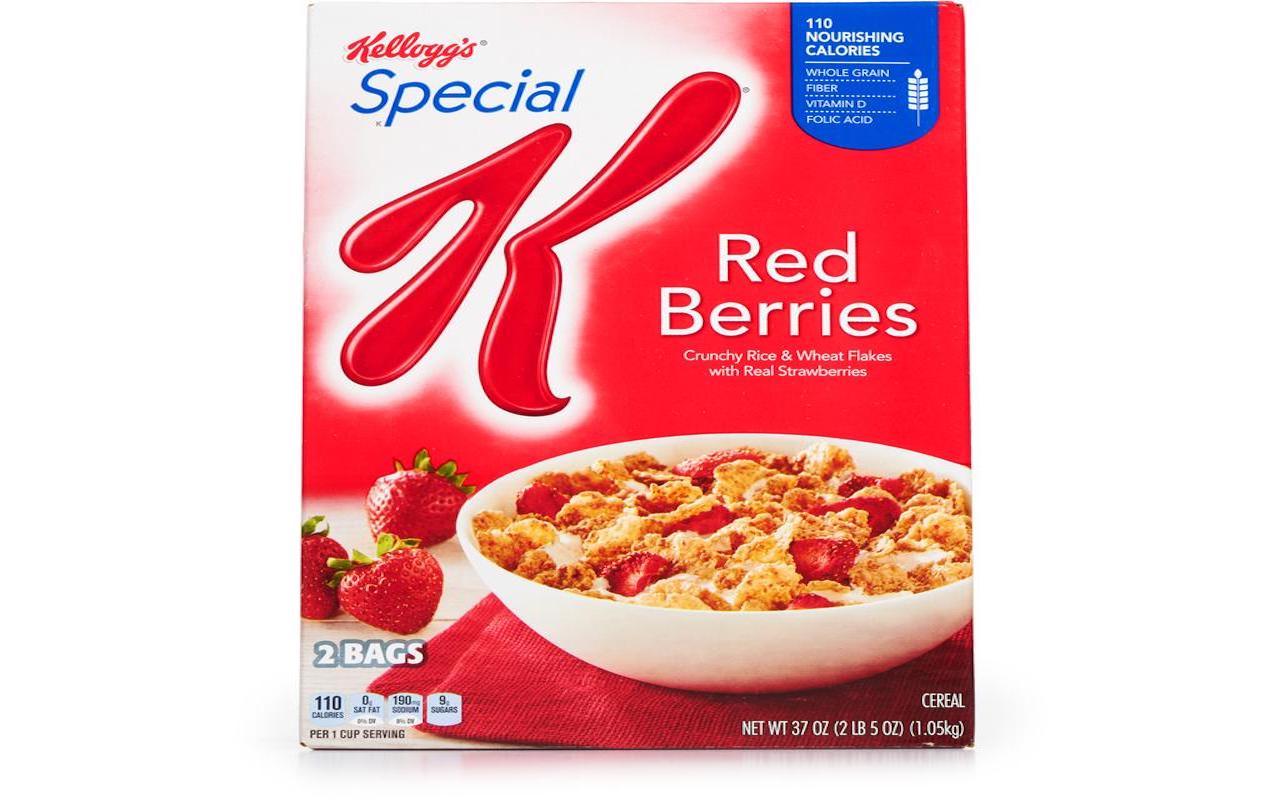
14. Special K Red Berries
- Company: Kellogg
- Sales: $134 million (+0.6% year-over-year)
- Boxes sold: 39.4 million (+4.5% year-over-year)
- Average unit price: $3.40
The original Special K, the first cereal fortified with vitamins and iron, was introduced in 1955. The Special K franchise has been a consistent winner for Kellogg ever since thanks to variations on the health-oriented formula, including Special K Red Berries.
Special K market share picked up at the end of last year after the company launched an effective media campaign and made investments in in-store promotions.
For the 52 weeks ended, Aug. 12, sales of Special K Red Berries were essentially flat even as volume rose 4.5%. The difference maker? The average selling price fell by 13 cents.

13. Rice Krispies
- Company: Kellogg
- Sales: $136.7 million (-4.8% year-over-year)
- Boxes sold: 42.1 million (-3.8% year-over-year)
- Average unit price: $3.25
Originally marketed as “The Talking Cereal” when it was first released in 1928 due to the sound it made when milk was added, Rice Krispies’ more familiar “Snap! Crackle! Pop!” slogan quickly debuted a year later.
The puffed rice cereal remains a top seller in the U.S. nine decades later, though Rice Krispies sales slipped nearly 5% for the year ended Aug. 12. Units sold dropped, too, by almost 4% year-over-year, and the average price per unit declined by 4 cents.
The core cereal brand still managed to add $136.7 million to Kellogg's top line. Rice Krispies Treats, meanwhile, are a key contributor to the company's U.S. Snacks division.
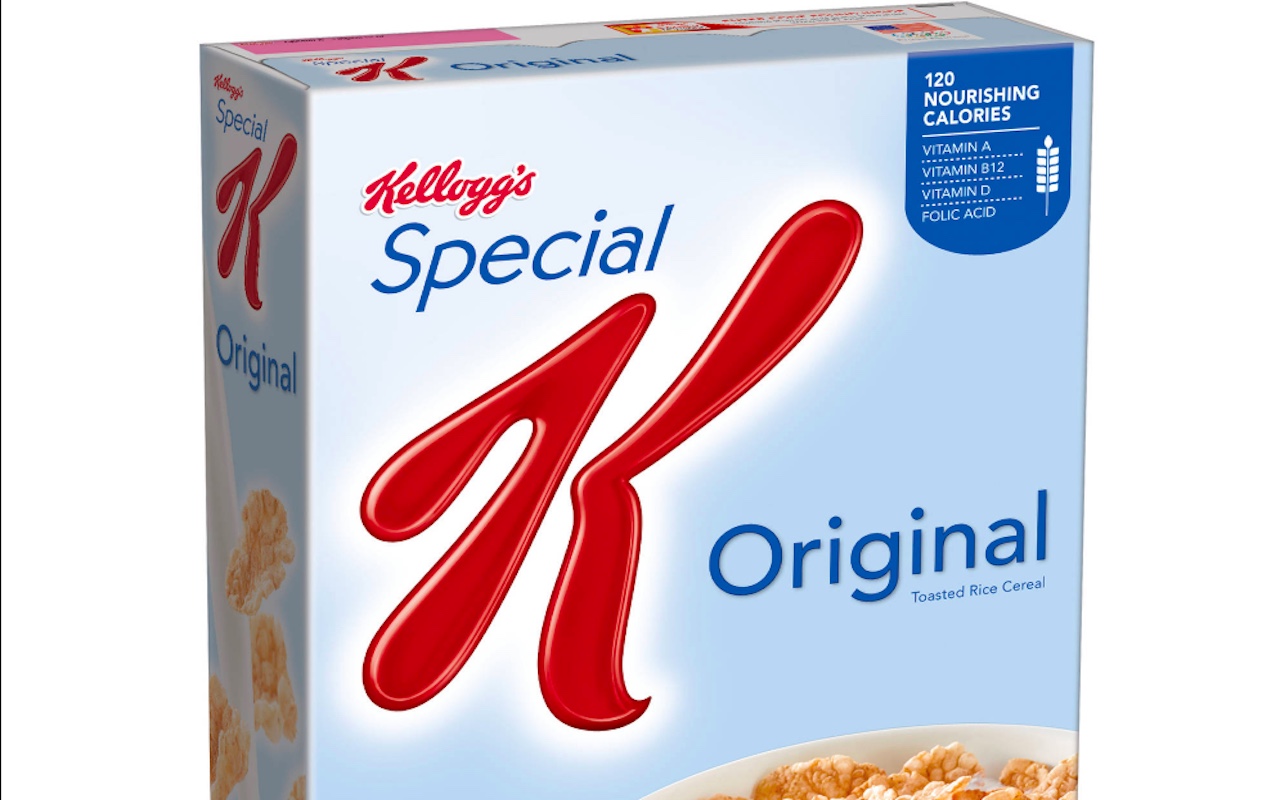
12. Special K
- Company: Kellogg
- Sales: $167.1 million (+6.1% year-over-year)
- Boxes sold: 47.0 million (+6.1% year-over-year)
- Average unit price: $3.55
The addition of seven vitamins and iron made Special K special when it was released 63 years ago. This classic Kellogg cereal is still special today, in light of the sales and volume growth of more than 6% that the brand posted for the 52 weeks ended Aug. 12. The average unit price of $3.55, unchanged year-over-year, is the highest among the 19 most popular cereals in the U.S.
Credit Suisse analysts note that Kellogg's focus on its "Core Six" brands -- Special K, Raisin Bran, Frosted Flakes, Mini-Wheats, Froot Loops and Rice Krispies -- is helping to drive increased cereal consumption. In particular, Kellogg promotes Special K as a healthful and nutritious choice for adults, the analysts note. The cereal is especially high in iron (35% of recommended daily value per serving) and folic acid (60%).

11. Raisin Bran
- Company: Kellogg
- Sales: $172.2 million (-5.2% year-over-year)
- Boxes sold: 48.9 million (-4.7% year-over-year)
Unlike its fellow “Core Six” cousin Special K, Kellogg's Raisin Bran saw revenue and the number of units sold decline year-over-year. Sales slid 5.2%, while unit volume fell 4.7%. Average price per unit decreased by 2 cents.
Still, with nearly 49 million boxes sold and more than $172 million in sales, Raisin Bran, invented during World War II , remains more popular than Special K. It’s also a bigger contributor to Kellogg's financial results.
Credit Suisse analysts note that part of Kellogg's marketing strategy is to emphasize the "gut health" benefits of bran fiber and to introduce brand extensions with probiotics.

10. Fruity Pebbles
- Company: Post
- Sales: $172.3 million (+8.8% year-over-year)
- Boxes sold: 54.1 million (+10.2% year-over-year)
- Average unit price: $3.19
Fruity Pebbles, based on animated series “The Flintstones,” debuted in 1971 and remains one of the most popular U.S. cereals to this day.
In fact, the colorful cereal is on a bit of a tear, of late, posting double-digit unit volume growth for the year ended Aug. 12. Sales jumped nearly 9% to $172.3 million. This despite a 4-cent decline in the average price for a box of Fruity Pebbles, according to IRI.
The history of Post cereals stretches back to the late 19th century, when cereal pioneer C.W. Post introduced Grape-Nuts. The current iteration of publicly traded Post Holdings, however, only dates to 2012, when it was spun off from Ralcorp. Analysts, on average, rate shares of Post Holdings at "Outperform" (buy), according to S&P Global Market Intelligence. Fruity Pebbles is certainly doing its part to keep analysts sweet on POST. It accounted for more than 10% of Post's total U.S. ready-to-eat cereal sales for the 52 weeks ended Aug. 12.
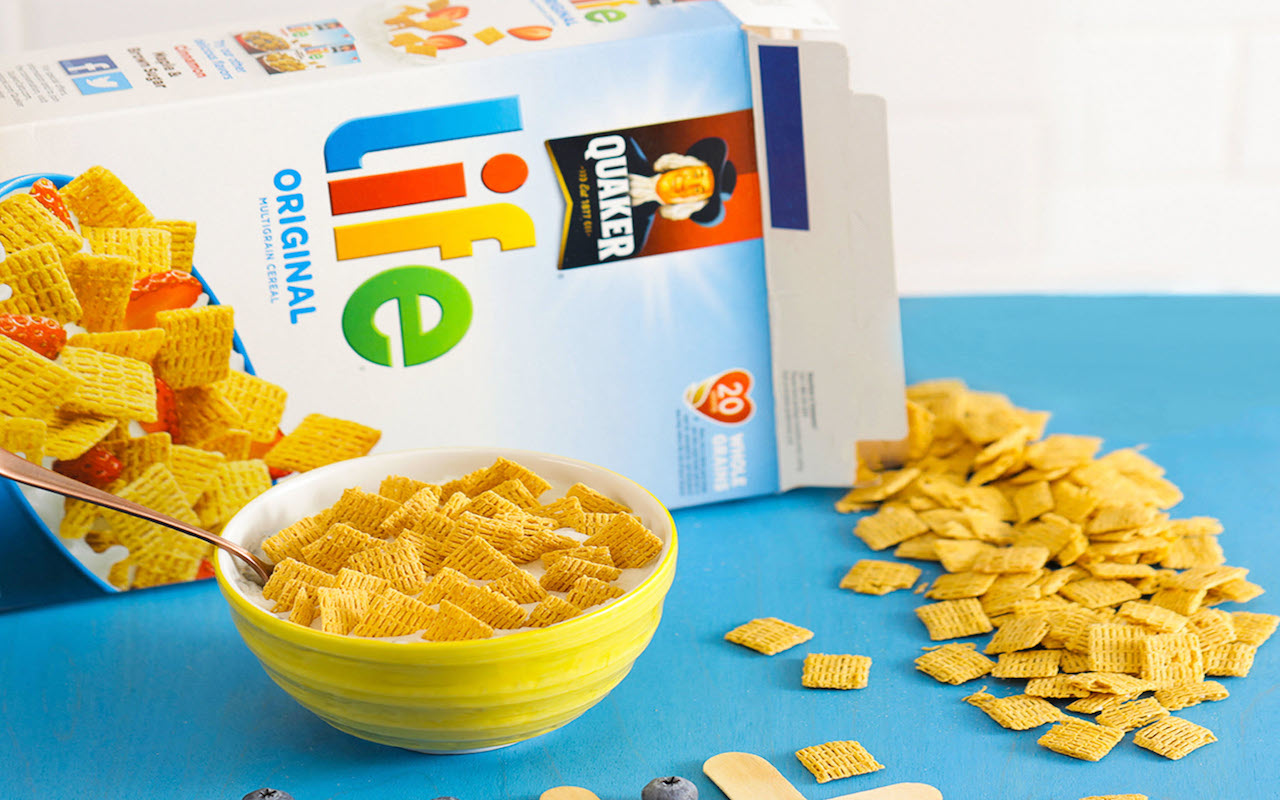
9. Life
- Company: Quaker (PepsiCo)
- Sales: $177.5 million (-3.8% year-over-year)
- Boxes sold: 58.1 million (-5.0% year-over-year)
- Average unit price: $3.06
Quaker, now part of PepsiCo, debuted Life cereal in 1961. Many decades and one iconic TV commercial later -- "He likes it! Hey Mikey!" -- Life remains a top-10 best-selling cereal.
That said, it hasn't been exactly flying off the shelves recently. Sales fell nearly 4% year-over-year for the 52 weeks ended Aug. 12. Units sold dropped and even steeper 5%. An average price increase of 4 cents a box helped cushion the blow.
The recent trend isn't great for Quaker Foods North America's ready-to-eat cereal business. Life accounts for nearly a third of Quaker's total U.S. ready-to-eat cereal sales.
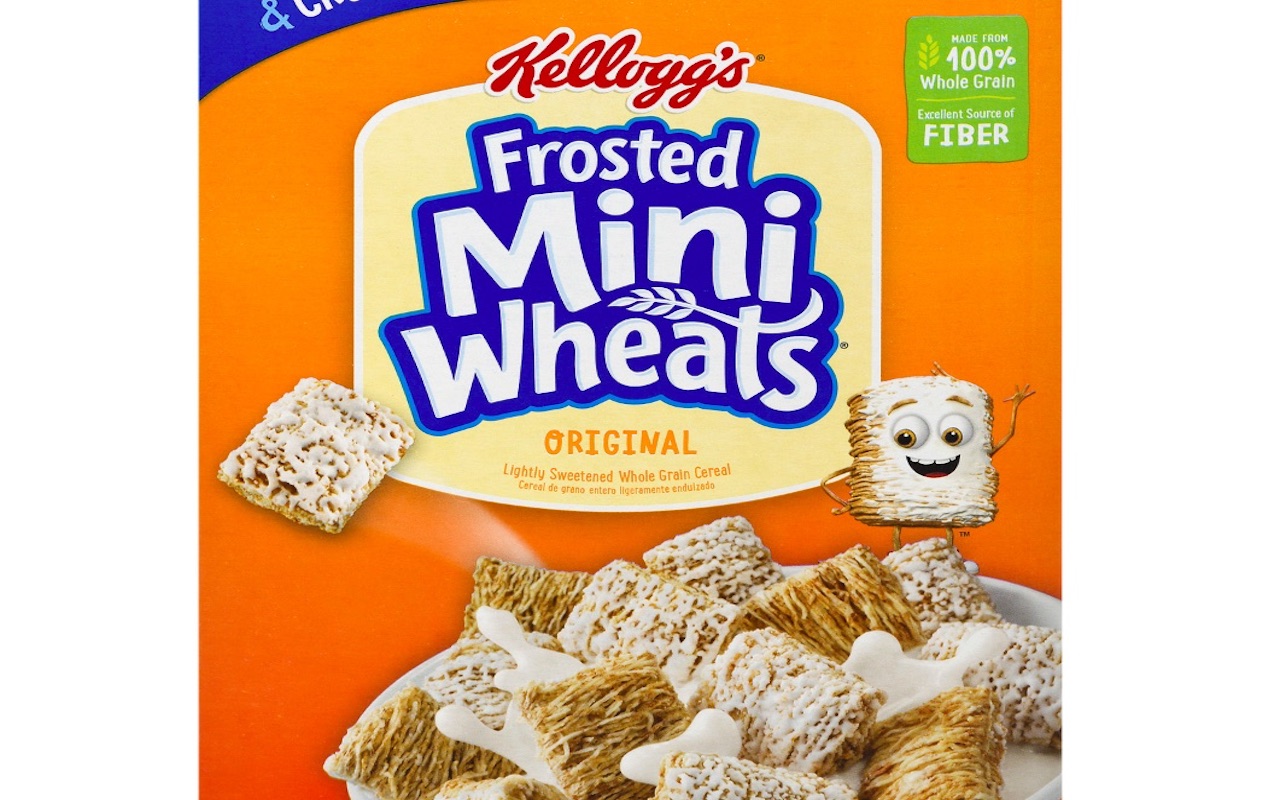
8. Frosted Mini-Wheats
- Company: Kellogg
- Sales: $241.9 million (-0.8% year-over-year)
- Boxes sold: 71.3 million (+1.7% year-over-year)
- Average unit price: $3.40
First introduced in 1969, Frosted Mini-Wheats remains remarkably popular to this day. Note that sales outpaced those of Life, the ninth most popular cereal in the U.S., by a whopping $64 million over the course of a year.
Frosted Mini-Wheats cereal brings in close to a quarter-billion dollars a year, accounting for not quite 10% of Kellogg's $2.5 billion in U.S. cold cereal sales. And that doesn't even include brand variations like Maple Sugar or Blueberry Mini-Wheats.
Sales were essentially flat in the one-year period measured by IRI, but that stabilization is actually good news for a "Core Six" Kellogg brand. The average price of a box fell 8 cents, as Kellogg sold more than 71 million units, a 1.7% increase, in the 52 weeks ended Aug. 12.
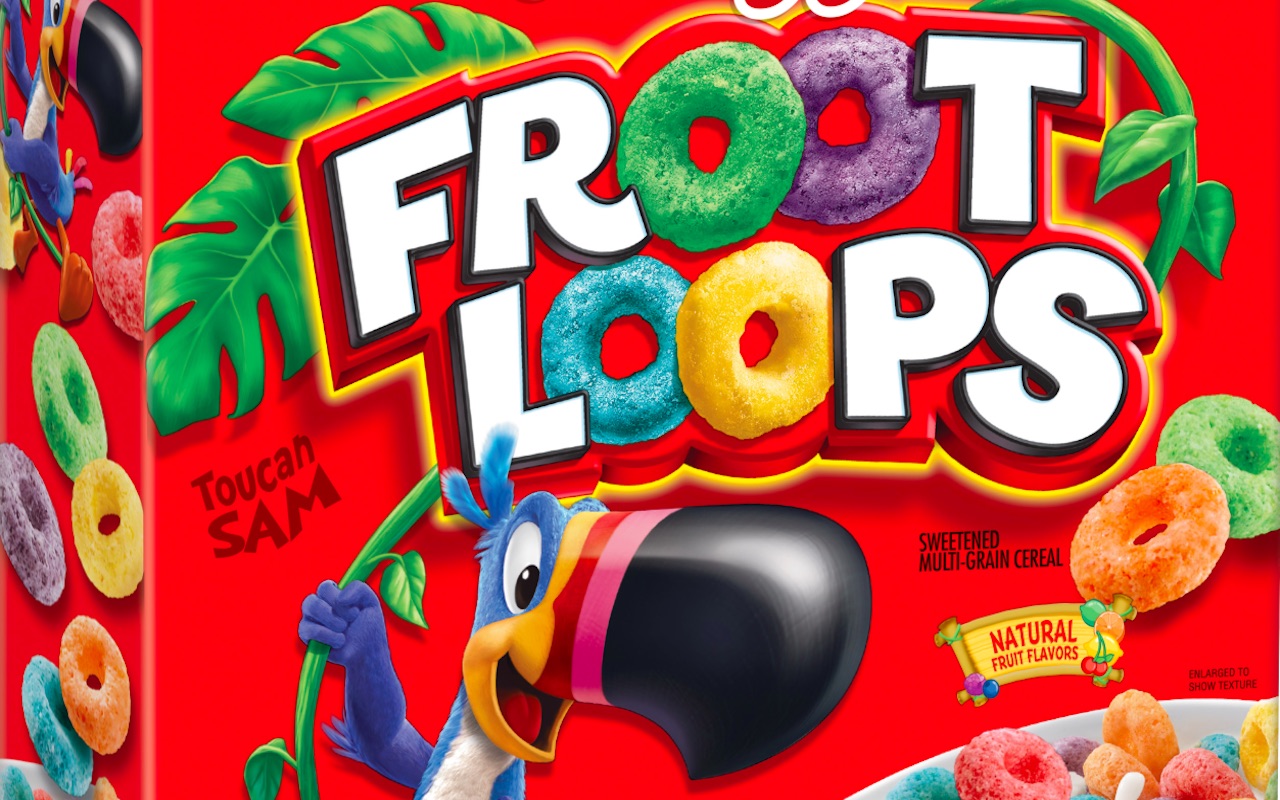
7. Froot Loops
- Company: Kellogg
- Sales: $269.1 million (+1.1% year-over-year)
- Boxes sold: 91.7 million (+3.8% year-over-year)
- Average unit price: $2.93
Froot Loops is a cornerstone of Kellogg's line-up and remains a favorite of American consumers 55 years after its 1963 debut. So too does Toucan Sam, Froot Loops’ colorful mascot.
Credit Suisse notes that Froot Loops helped Kellogg in the second quarter with solid consumption and market-share gains. For the 52 weeks ended Aug. 12, sales increased 1.1% to more than $269 million. Volume rose 3.8% to 91.7 million boxes sold.
In good news for shoppers, the average price per box declined 8 cents year-over-year. Froot Loops is the least expensive of America's top 10 most popular ready-to-eat cereals.
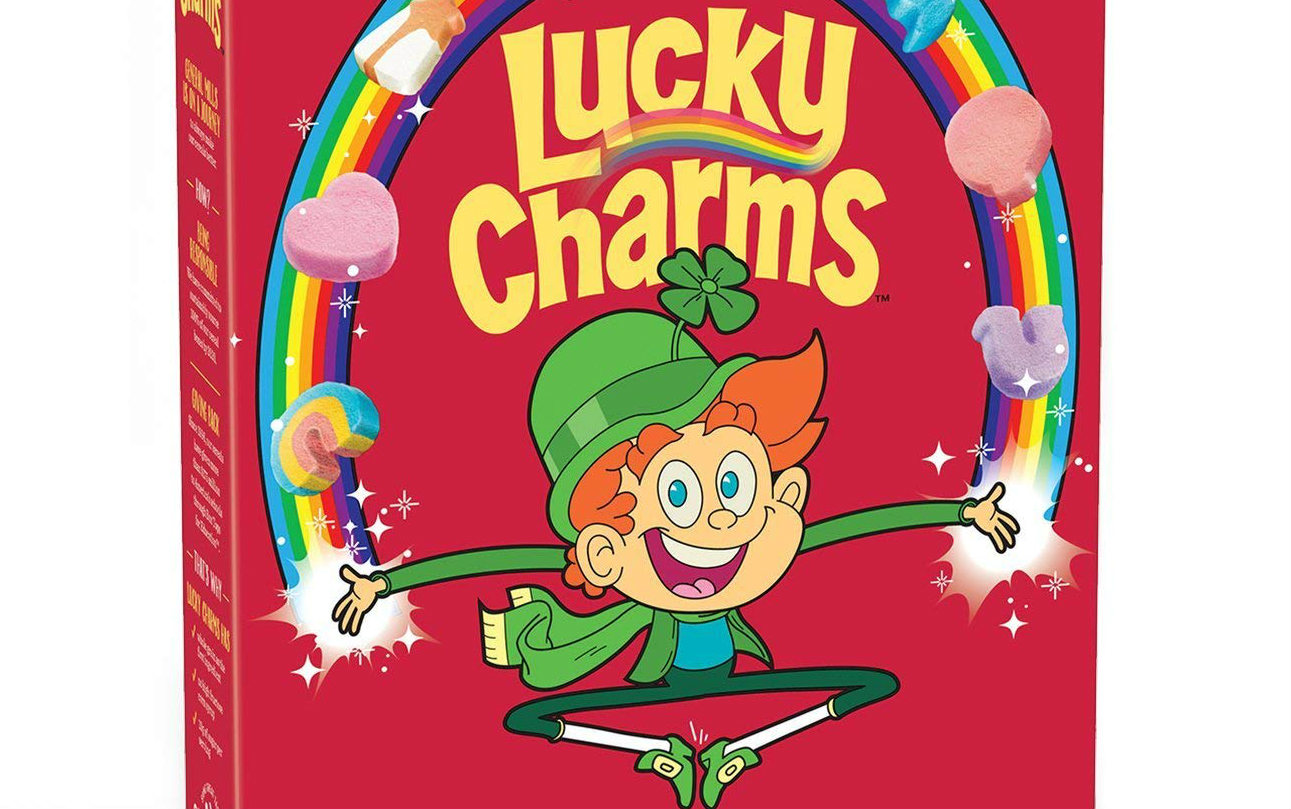
6. Lucky Charms
- Company: General Mills
- Sales: $283.4 million (+4.3% year-over-year)
- Boxes sold: 86.4 million (+1.9% year-over-year)
- Average unit price: $3.28
General Mills introduced Lucky Charms in 1964. Although its combination of oat pieces and marshmallows in various shapes and colors has changed somewhat over the years, its status as a best-seller hasn't.
Lucky Charms generated sales of $283.4 million for the 52 weeks ended Aug. 12, a 4.3% year-over-year increase. All told, the breakfast staple with the leprechaun mascot accounted for almost 11% of General Mills' U.S. cold cereal sales, according to IRI.
The average unit price rose 8 cents year-over-year, which helped boost the brand's top-line results.
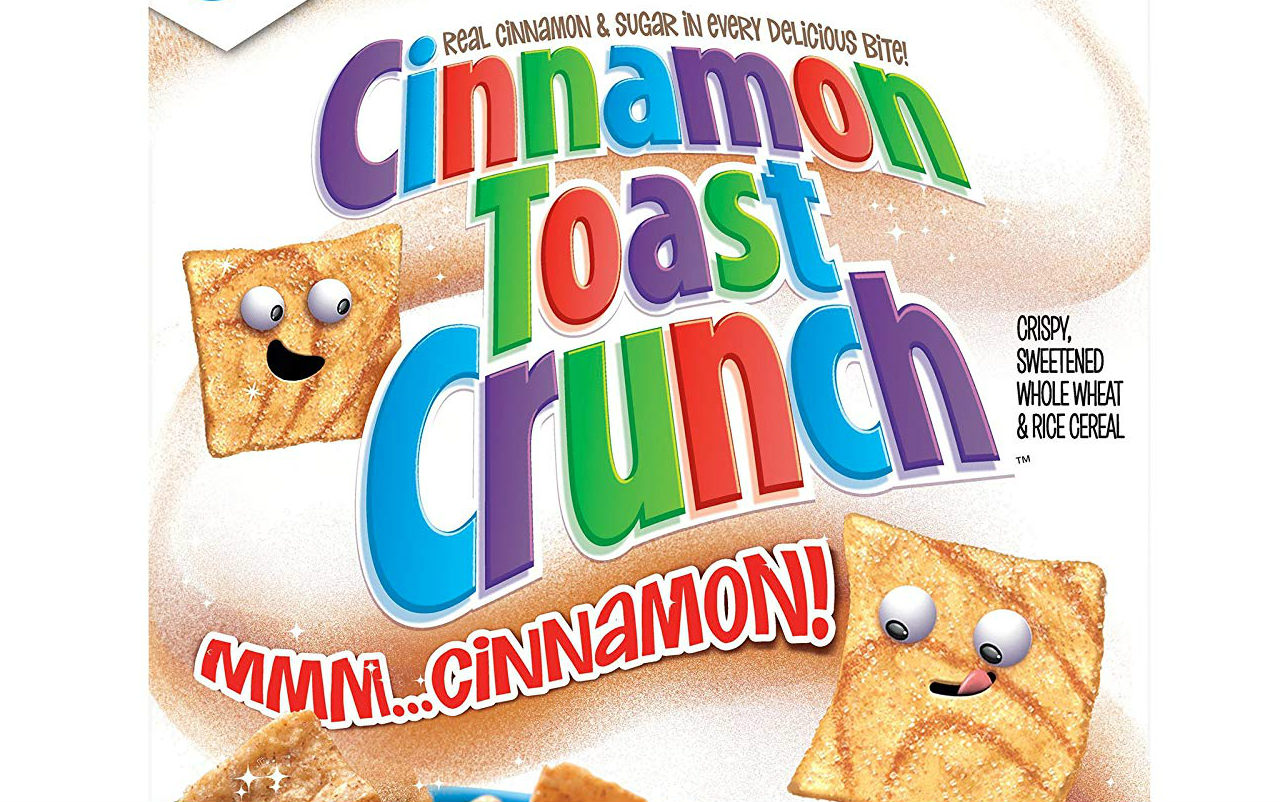
5. Cinnamon Toast Crunch
- Company: General Mills
- Sales: $344.3 million (-8.1% year-over-year)
- Boxes sold: 105.2 million (-6.6% year-over-year)
- Average unit price: $3.27
General Mills' Cinnamon Toast Crunch is a top-five cereal by a wide margin even though sales, volume and pricing declined for the 52 weeks ended Aug. 12.
The brand still generated more than $344 million for General Mills despite the more than 8% year-over-year drop in sales. That's a lead of about $60 million over sister brand Lucky Charms.
Cinnamon Toast Crunch, which debuted in 1994, is also the first name on this list to top more than 100 million boxes sold in the 12-month period. That said, volume declined nearly 7% and average price per box fell 5 cents.
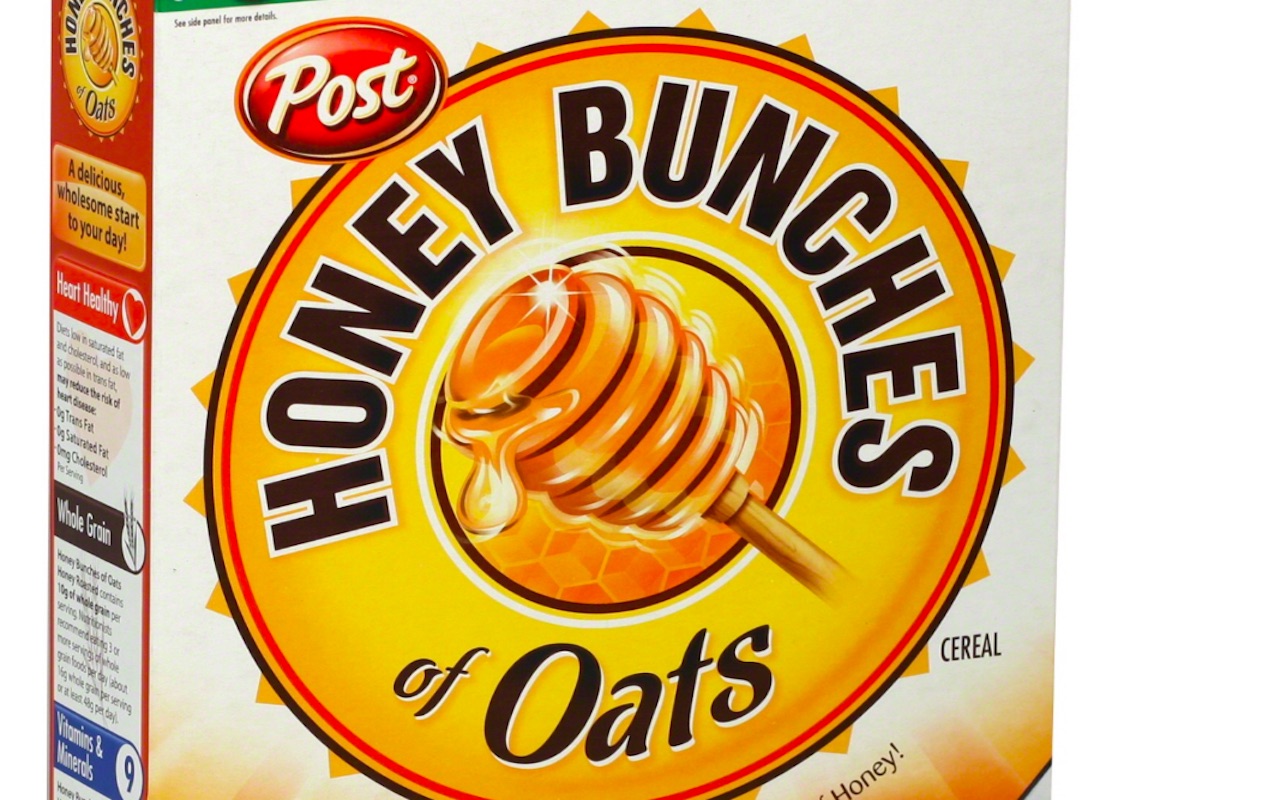
4. Honey Bunches of Oats
- Company: Post
- Sales: $375.2 million (-4.8% year-over-year)
- Boxes sold: 111.3 million (-5.3% year-over-year)
- Average unit price: $3.37
Honey Bunches of Oats is another long-time top-seller that has been experiencing declining sales and volume of late.
Investors in Post Holdings will no doubt be keeping a close eye on the brand's results going forward. Honey Bunches of Oats accounted for about one-quarter of the company's total U.S. cold cereal sales for the year ended Aug. 12.
Although revenue fell by nearly 5% and unit sales declined by more than 5%, the average price per unit did rise by 2 cents, according to IRI. Honey Bunches of Oats first hit the market in 1989.
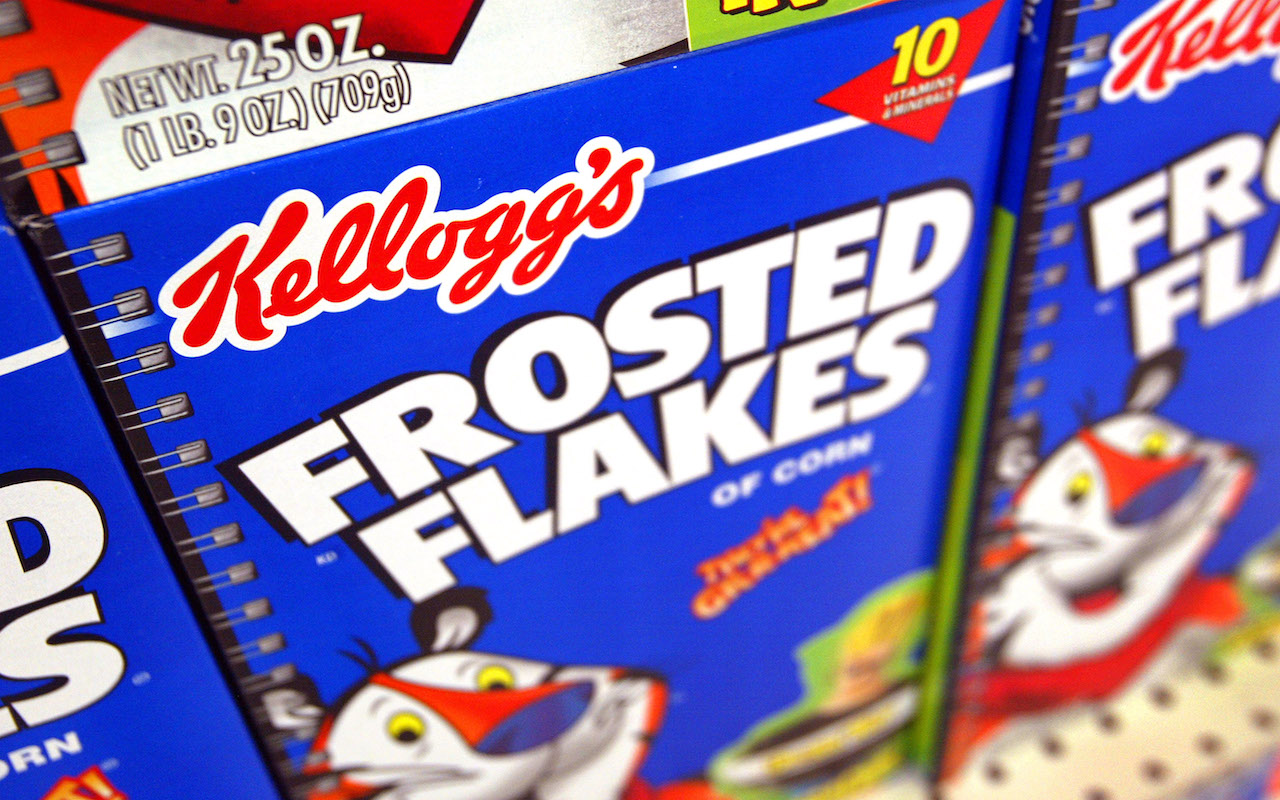
3. Frosted Flakes
- Company: Kellogg
- Sales: $412.6 million (-0.4% year-over-year)
- Boxes sold: 132.3 million (+1.9% year-over-year)
- Average unit price: $3.12
They really are great. Frosted Flakes, a staple of Americans' kitchen pantries since 1952, is the third most popular U.S. cold cereal by revenue and the second best-seller in terms of units sold.
Sales were essentially unchanged at $412.6 million for the 52 weeks ended Aug. 12. And average price decline of 7 cents per unit was good news for shoppers and helped lift volume by 1.9% to 132.3 million boxes sold.
Tony the Tiger's favorite cereal throws its weight around when it comes to the health of Kellogg's cereal business. Frosted Flakes accounted for almost 17% of the company's total U.S. cold cereal sales in the year ended Aug. 12.
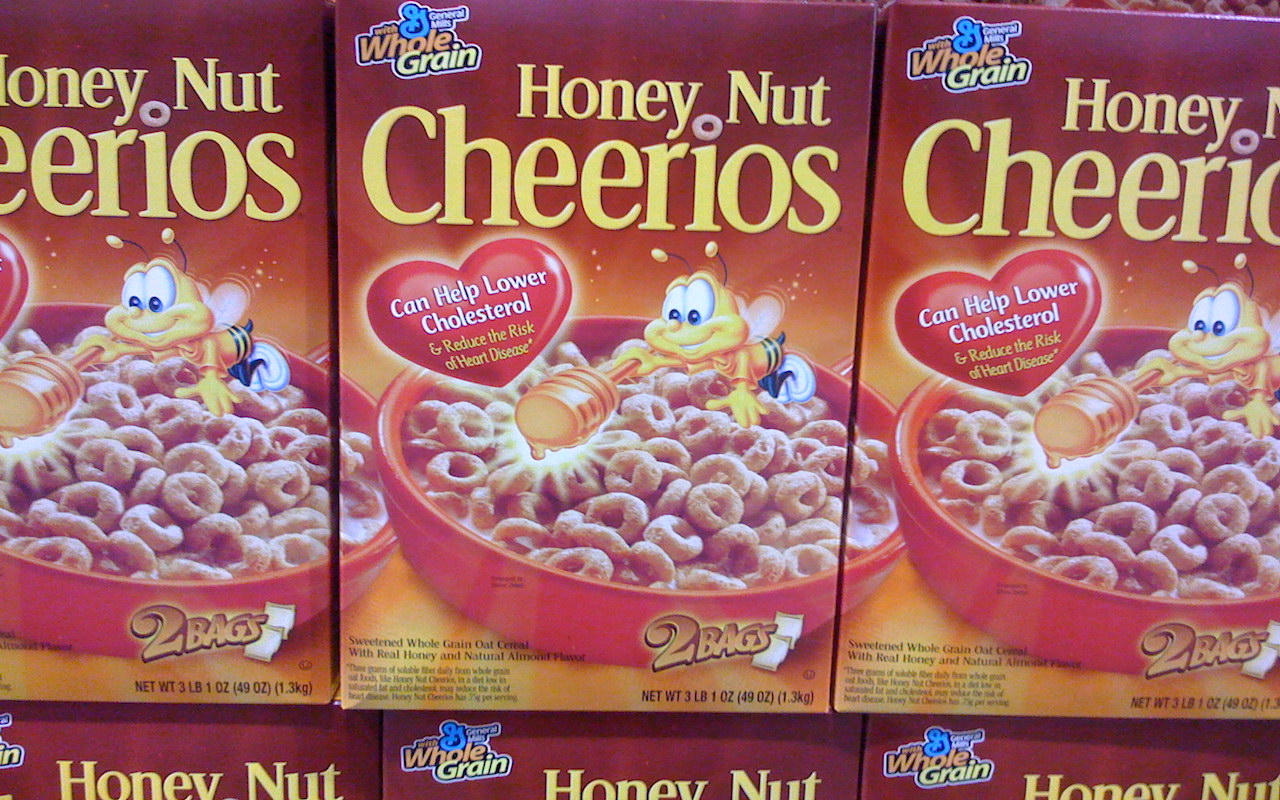
2. Honey Nut Cheerios
- Company: General Mills
- Sales: $421.7 million (-16.3% year-over-year)
- Boxes sold: 129.3 million (-14.2% year-over-year)
- Average unit price: $3.26
Honey Nut Cheerios came on the market in 1979, a brutal time for the U.S. economy. To attract penny-pinching shoppers to the new brand during this recessionary time, General Mills gave away 29 million coupons for free sample-size boxes. The gambit worked, and Honey Nut Cheerios has been a hit with cereal lovers ever since. Even after suffering steep declines in sales and volume over the past year, the brand still generated the second most revenue in the industry.
Sales of the sugary cereal dropped more than 16%, but Honey Nut Cheerios still added nearly $422 million to General Mills' top line. Units sold declined by more than 14% to around 129 million, while the average price per unit fell by 8 cents.
Despite the setbacks, Honey Nut Cheerios accounted for 16.2% of General Mills' total U.S. cold cereal sales for the 52 weeks ended Aug. 12.
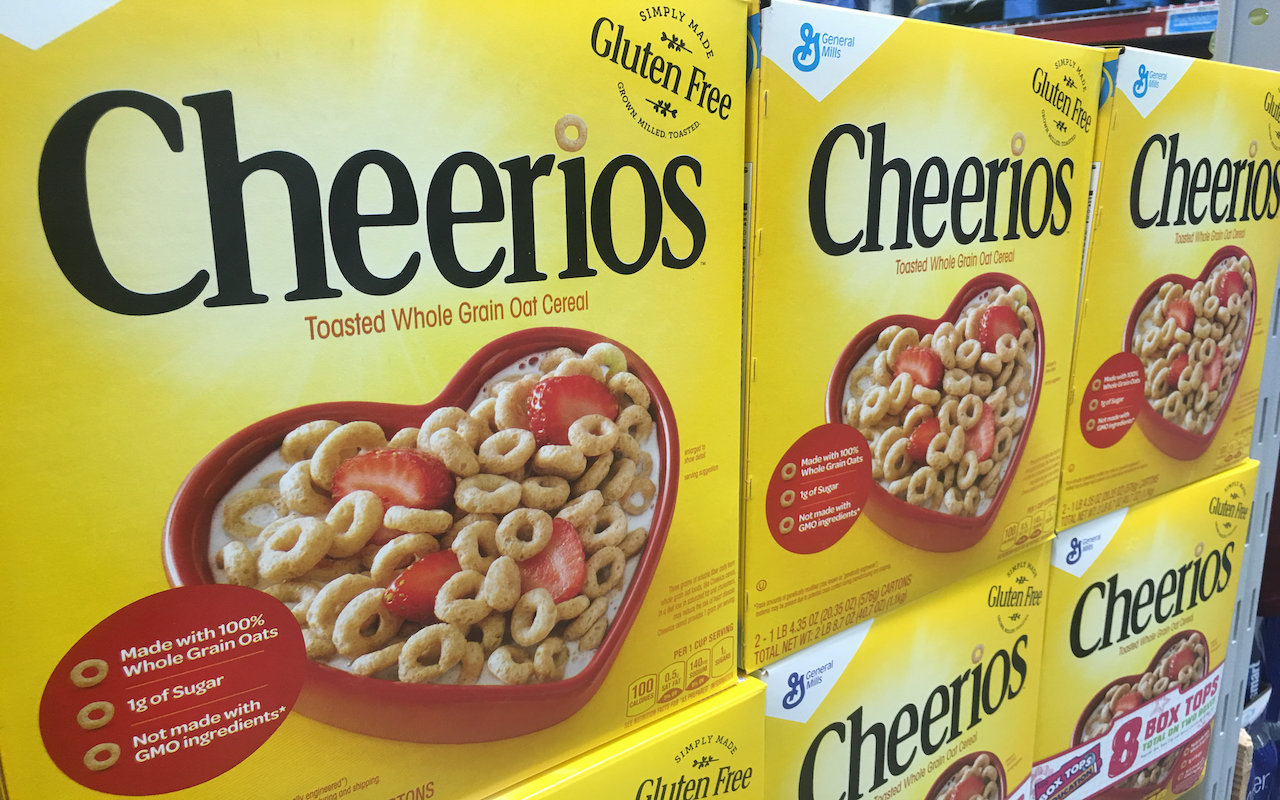
1. Cheerios
- Company: General Mills
- Sales: $435.9 million (+30.3% year-over-year)
- Boxes sold: 139.1 million (+35.9% year-over-year)
- Average unit price: $3.13
America's favorite cereal by both revenue and boxes sold is Cheerios. General Mills tested more than 500 formulas and numerous shapes and sizes before landing on the winning combination in 1941. Originally called Cheerioats, the name was changed to the familiar Cheerios in 1945.
Fast-forward to the present and General Mills is enjoying a renaissance in the venerable cereal brand. Cheerios sales rose by more than 30% year-over-year to almost $436 million. Volume jumped by more than a third to 139.1 million units. At the same time, the average price of a box of Cheerios fell by a consumer-friendly 13 cents.
General Mills makes a point of touting the healthful properties of Cheerios: It’s made with 100% natural whole grain oats, and it’s gluten-free. Let’s give Cheerios a well-deserved cheer for topping the list of the best-selling cereals in the U.S.
Profit and prosper with the best of Kiplinger's advice on investing, taxes, retirement, personal finance and much more. Delivered daily. Enter your email in the box and click Sign Me Up.

Dan Burrows is Kiplinger's senior investing writer, having joined the publication full time in 2016.
A long-time financial journalist, Dan is a veteran of MarketWatch, CBS MoneyWatch, SmartMoney, InvestorPlace, DailyFinance and other tier 1 national publications. He has written for The Wall Street Journal, Bloomberg and Consumer Reports and his stories have appeared in the New York Daily News, the San Jose Mercury News and Investor's Business Daily, among many other outlets. As a senior writer at AOL's DailyFinance, Dan reported market news from the floor of the New York Stock Exchange.
Once upon a time – before his days as a financial reporter and assistant financial editor at legendary fashion trade paper Women's Wear Daily – Dan worked for Spy magazine, scribbled away at Time Inc. and contributed to Maxim magazine back when lad mags were a thing. He's also written for Esquire magazine's Dubious Achievements Awards.
In his current role at Kiplinger, Dan writes about markets and macroeconomics.
Dan holds a bachelor's degree from Oberlin College and a master's degree from Columbia University.
Disclosure: Dan does not trade individual stocks or securities. He is eternally long the U.S equity market, primarily through tax-advantaged accounts.
-
 2026 Family Tax Credits: Three IRS Changes You Need to Know Now
2026 Family Tax Credits: Three IRS Changes You Need to Know NowTax Credits While the child tax credit remains the same, other family tax credits are higher for 2026, including the earned income tax credit and other inflation-adjusted amounts. Here's what they're worth now.
-
 A 'Fast, Fair and Friendly' Fail: Farmers Irks Customers With Its Handling of a Data Breach
A 'Fast, Fair and Friendly' Fail: Farmers Irks Customers With Its Handling of a Data BreachFarmers Insurance is facing negative attention and lawsuits because of a three-month delay in notifying 1.1 million policyholders about a data breach. Here's what you can do if you're affected.
-
 What to Do With Your Tax Refund: 6 Ways to Bring Growth
What to Do With Your Tax Refund: 6 Ways to Bring GrowthUse your 2024 tax refund to boost short-term or long-term financial goals by putting it in one of these six places.
-
 What Does Medicare Not Cover? Eight Things You Should Know
What Does Medicare Not Cover? Eight Things You Should KnowMedicare Part A and Part B leave gaps in your healthcare coverage. But Medicare Advantage has problems, too.
-
 15 Reasons You'll Regret an RV in Retirement
15 Reasons You'll Regret an RV in RetirementMaking Your Money Last Here's why you might regret an RV in retirement. RV-savvy retirees talk about the downsides of spending retirement in a motorhome, travel trailer, fifth wheel, or other recreational vehicle.
-
 The 24 Cheapest Places To Retire in the US
The 24 Cheapest Places To Retire in the USWhen you're trying to balance a fixed income with an enjoyable retirement, cost of living is a crucial factor to consider. Is your state the best?
-
 The Six Best Places to Retire in New England
The Six Best Places to Retire in New Englandplaces to live Thinking about a move to New England for retirement? Here are the best places to land for quality of life, affordability and other criteria.
-
 The 10 Cheapest Countries to Visit
The 10 Cheapest Countries to VisitWe find the 10 cheapest countries to visit around the world. Forget inflation and set your sights on your next vacation.
-
 15 Ways to Prepare Your Home for Winter
15 Ways to Prepare Your Home for Winterhome There are many ways to prepare your home for winter, which will help keep you safe and warm and save on housing and utility costs.
-
 Six Steps to Get Lower Car Insurance Rates
Six Steps to Get Lower Car Insurance Ratesinsurance Shopping around for auto insurance may not be your idea of fun, but comparing prices for a new policy every few years — or even more often — can pay off big.
